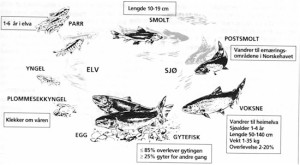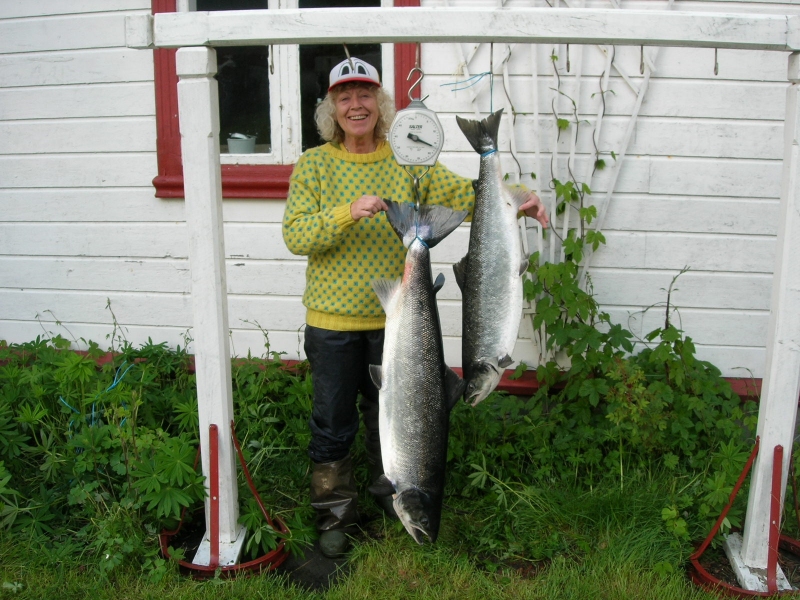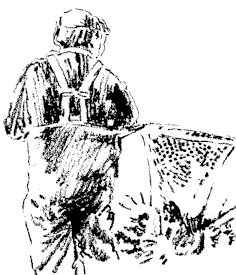SALMON – SALMO SALAR
The salmon belongs to the anadromous species of fish. It can live in both freshwater and saltwater. Young salmon incubate in freshwater and swim out to the sea after 2 – 6 years where they rapidly grow bigger. They are sexually mature after 1 – 3 years in the sea, and when it’s time, the fish go back to the rivers to spawn. At this time they usually weigh between 2 33 lbs. But a few specimens can be up to 75 lbs. The salmon’s total life span is normally 4 8 years.

The salmon’s youth-area is first in the coastal streams and in the North Sea, then the Barents Sea, the areas around Faeroe Islands, west towards Greenland and north towards Bear Island. Salmon go across big oceans. Little is known about the patterns they follow. Salmon eat what they can find. The important parts of the menu are herring, capelin, octopus and different crayfish.
When we say that the salmon is “lousy”, we mean that it has come directly from the sea, and has the best quality. Sea-lice is a little parasite that the fish brings from the sea and the fjords, that sucks itself to the skin of the salmon from 1 5 days after it enters the fresh water, (it depends on the temperature of the water). Salmon with lice is a good omen for the angler. It gives great expectations that taking fish are in the area, since the salmon seldom come up the rivers alone; (they usually come in big or small groups).

Most Norwegians have their own image of the salmon. The salmon is a symbol. They are an important part of the changes of the season, and investigation shows that the salmon has a big importance for people’s wellbeing, health and quality of life. During salmon season the population doubles in many places for some hectic weeks, as people from many different nations and communities meet. The interest in the salmon is the common denominator.

“But often during daytime he, (Loke), changed himself into a salmon and hid in the waterfalls. Tor seized and caught him, but he was so slippery that Tor did only get a firm hold just above the tail; and that is why the salmon narrows at the back.”
Snorre Sturlason, Edda (ca. 1200)


